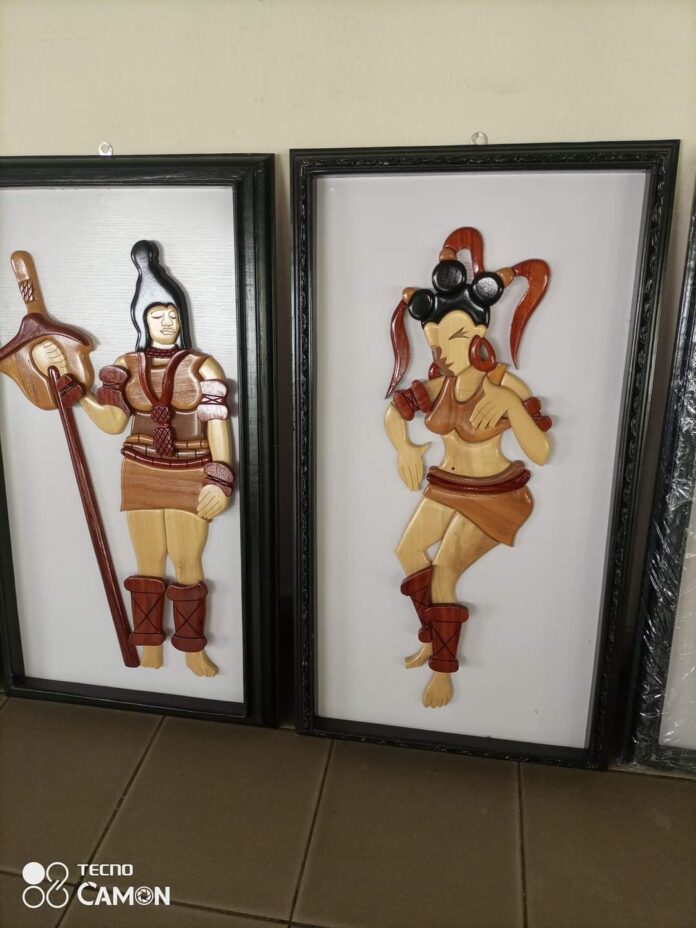Firstly, without reference to any existing loose, serious or generally accepted definition (s) of EKÖMBI, I will like to authoritatively school interested global learners on the subject as follows.
1. Ekömbi as a popular Efik maiden dance with origin shrouded in myth or mystery is much associated with marine origin and dated in age to undocumented antiquity. It is visually grandurous by nature, content and spectacle/ motif, when aesthetically reviewed for its artistic, literary or theatrical merits. Or, when naturally compared for its originally evident, well-choreographed spatial/timely movement and rhythm that likens that of observed ocean (high and low) tides hamonious movements in response to the under water current prompted by occean wind.
2. There are seven mystical or hidden wonders in Ekömbi Efik that can never be found in its copied, imitated or prototype forms as the Ibibios’ et al. Those wonders that are mainly best known to Holyns Hogan as their sole academic discoverer, promoter and preserver in global scholarship are results of over two decades scientific research studies by empiricism and rationalism.
They are equally supported by my deep understanding of Efik spiritism or original polytheism that puts Ndem at the highest spiritual realm, with Mbukpo and Ekpe as other part of ancient Efik triumvirate linkers of humanity to its creator, after Abasi Ibom Enyöñ as Almighty God. This particularly covers my studies on Ndem[ism] esoterica and mysticism, previously published in parts and shared on social media, and are currently making their ways into serious scholarship business away from their over plagiarized copies by some intellectual property thieves on the Internet, especially unguided bloggers and baby researchers who care less about approved research ethics.
3. There are two main types of EKÖMBI; viz; “ikpat Iba-iba”… used mainly in Ayañ (an Efik Ekömbi similitude) and “Ekömbi Itiat Ntoken”(so nicknamed for its subtle, rolling or rhythmic semblance to the movement of the usually spherical hand grinding stone used by Efik ancestors for grinding pepper on a sizeable flat granite stone, respectively called eyen ye eka itiat ukök ntokon.
Note that Ekömbi Itiat Ntoken is the mother of original Efik Ekömbi dance performed ritualistically by Ndem priestess and acolytes during Ndem worship and/or religious festivals or important state ceremonies. Also that despite being historically traced in origin to the Marine environment and its best form reserved or mostly performed to appease Ndem during Efik religious festivals/state official ceremonies, Ekömbi originally has nothing to do with marine spirits as commonly misconceived or demonized by fanatics at some unguided religious quarters.
This, however, doesn’t negate the fact that Ekömbi dancer may be possessed during Ndem worship if found spiritually worthy, suitable or qualified to serve Ndem beyond the physical realms.
4. Despite being one of the most loved and easily patronized popular, copied, bastardized or adulterated Efik original maiden dance that overtime turned unisex with some elements of its semblance in most Efik established ancestral traditional social, religious, occupational or abstract dance, the Ibibios et al deserve special acknowledgement for being the most formidable and prominent of all ethnic nations that help the Efik to globally advertise, preserve and keep Ekömbi alive.
5. Consequently, my conclusion is an advice that we worry less about what naturally segregates or deepens our ethnic divisiveness or ancestral wounds. Rather, we should deliberately promote that which ultimately brings us peace, progress and unity in diversity as a plural nation.
© Holyns Hogan, 2023










